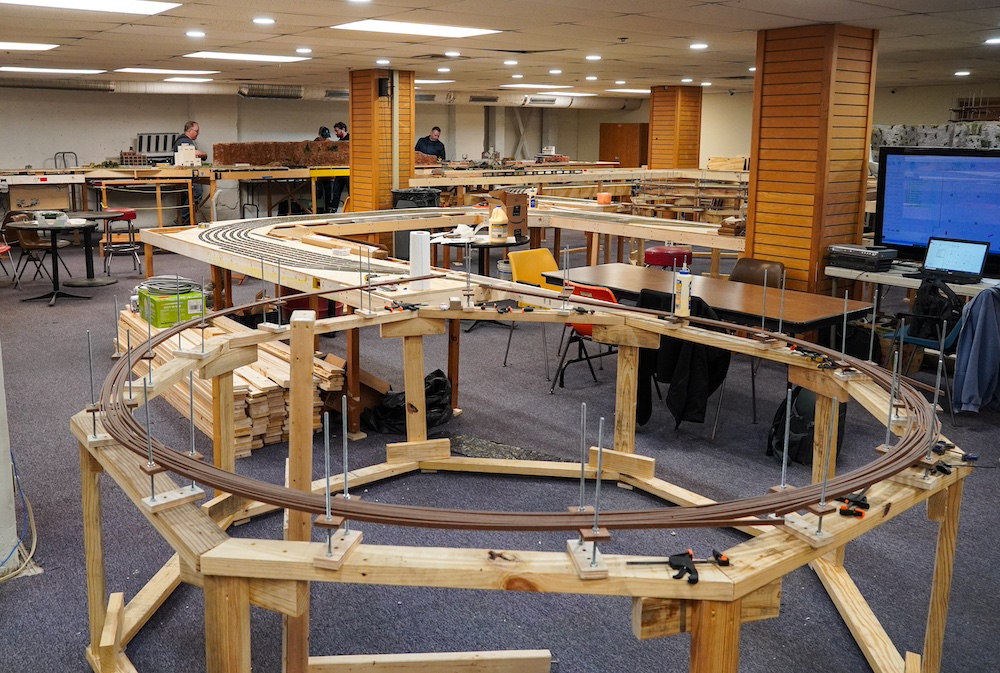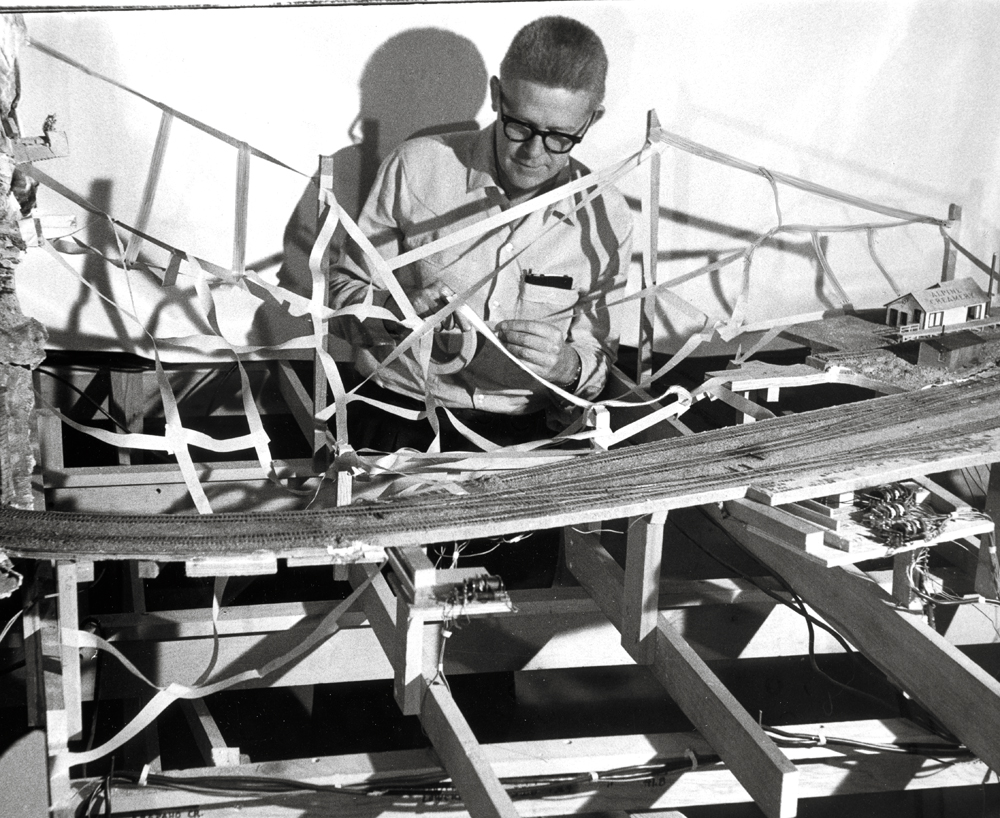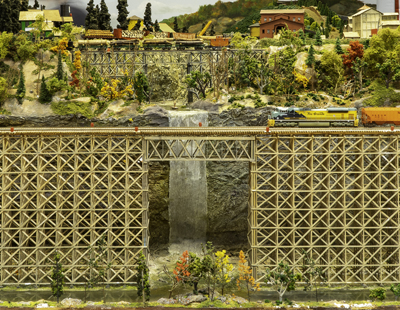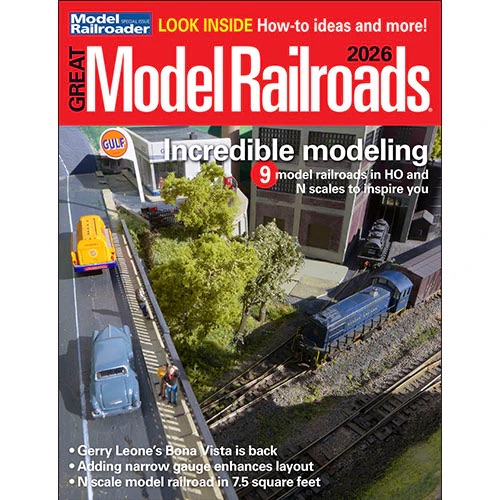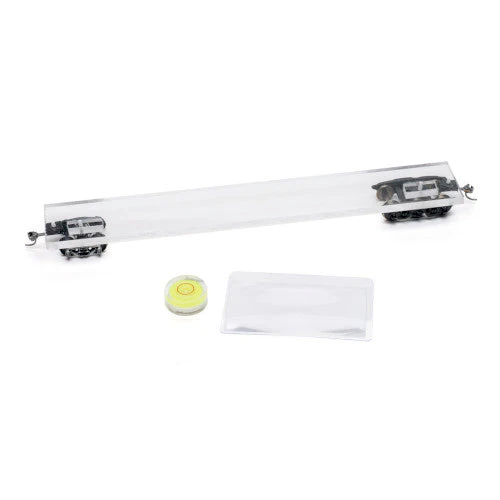I first encountered the Lone Star Treble-O-lectric system when one of my old school friends had a box full of play-worn equipment, which we would just set up on the carpet and get them to go!
At that time, the last remnants of the Lone Star system were sold in stores such as Woolworths, among others, as a push-along system called “Treble-O-Trains.” Treble-O predates N scale, but is about the same size and used 9 mm gauge track.
I can only recall a couple of Lone Star layouts appearing in the model railway magazines over the years, one being Clive Lemmon’s “The Moss Side Line” in the August 1971 Railway Modeller. Here, I present my own attempt, with a little company history as well.
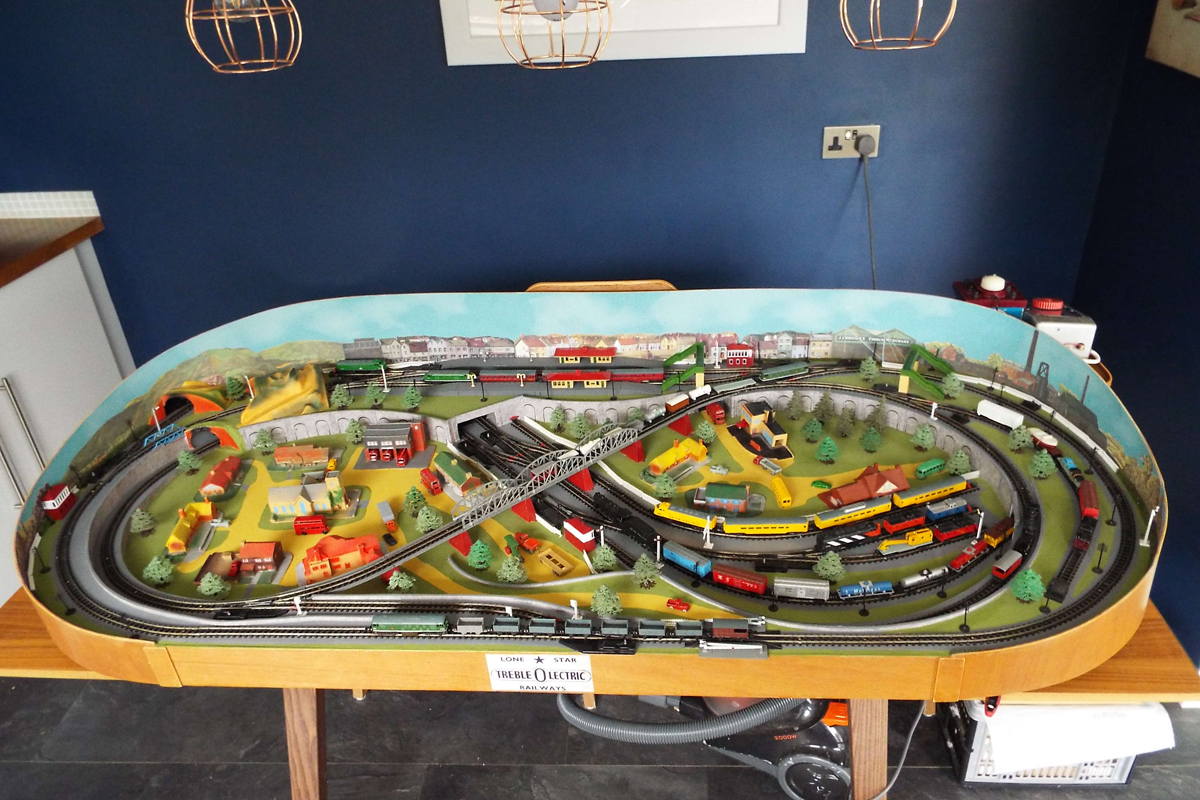
The parent company of “Lone Star” was Die Casting Machine Tools Ltd. of Palmers Green, London, established in 1939. They were among the world’s leading manufacturers of die-cast metal model cap-firing guns and model vehicles. The company got its name from their western-style pistols and rifles, which were first introduced in 1949 in the wake of popular Western programs and films. The railway side started in 1957 with a push-along half-OO range of models copied from the OO ranges of Tri-ang and Hornby-Dublo, hence OOO. In 1960, the electric railway range came along, and this was expanded to have more American items, as this ended up as the primary market.
It took many years for me to collect a usable amount of rolling stock. This was before the advent of the internet, so my collection consisted of what I could come across by word of mouth, visiting shops, and classified ads in model railway magazines.
Over time, various track plans were considered and drawn up, though the majority of these were discarded due to space. In the end, it came down to just two designs that would just not go away. The first was a Hornby Dublo three-rail layout described in the October 1960 Railway Modeller magazine titled “One Year’s Progress.” The second plan, and the one that formed the basis of the layout I expanded, was drawn up by Dave Lowery in the 1980s as a small layout project using off-the-shelf components and described in Your Model Railway magazine. The resulting plan contains two separate circuits which can be combined into one, and an out-and-back facility with a small fiddle yard.
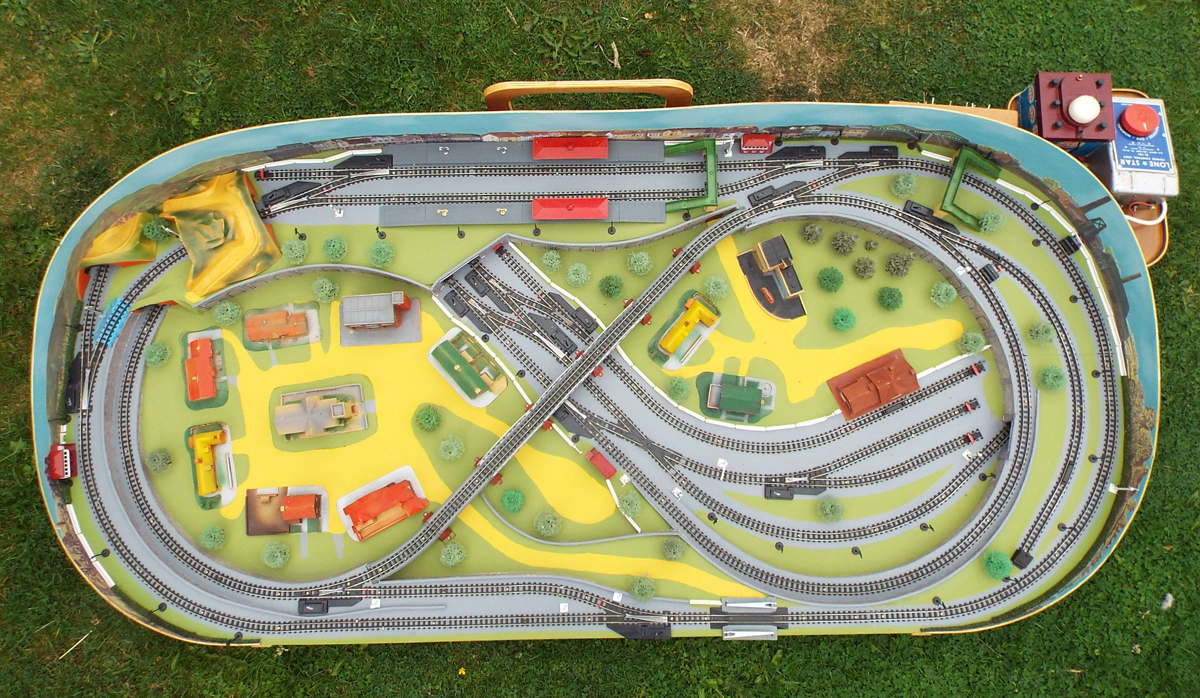
As part of the planning process, I collected some early 1960s Railway Modeller issues to get the feel of the modeling back then. For the benchwork, I used three-millimeter plywood strengthened with softwood battens, which is similar to a small square TT layout described in the March 1964 Railway Modeller. This layout also had the main board cut to form the various levels and track beds, which I gave a modern twist with the curved ends and an integral backdrop. The controllers are mounted on a plywood shelf attached to the side corner of the layout, with the main transformers contained in a separate box that sits underneath the layout. This is a concession to modern electrical safety and is connected to the layout by an umbilical cable, which also helps to keep the total layout weight down. The Lone Star controller has had its transformer removed, and the battery controller has had the cells removed from the old battery boxes, which were strengthened internally and adapted to provide space for an old H&M “Rocket” controller’s internal components, less its transformer, for better control. I have also used modern switches for track blocks mounted in the panel. I could have used old Hornby Dublo switches with a plain signal box style, but decided against that due to electrical concerns. In the future, I plan to motorize the hard-to-reach points with Lone Star motors and switches when some have been located.
This brings us to the trackwork, all of it Lone Star, with only full- and half-straights and curves available; the other small lengths had to be made to fill in the gaps. Lone Star did plan to produce other lengths, but never got around to making them, having felt the financial ill wind that brought about the demise of Hornby Dublo and also saw the rise of slot cars and Scalextric in the early 1960s.
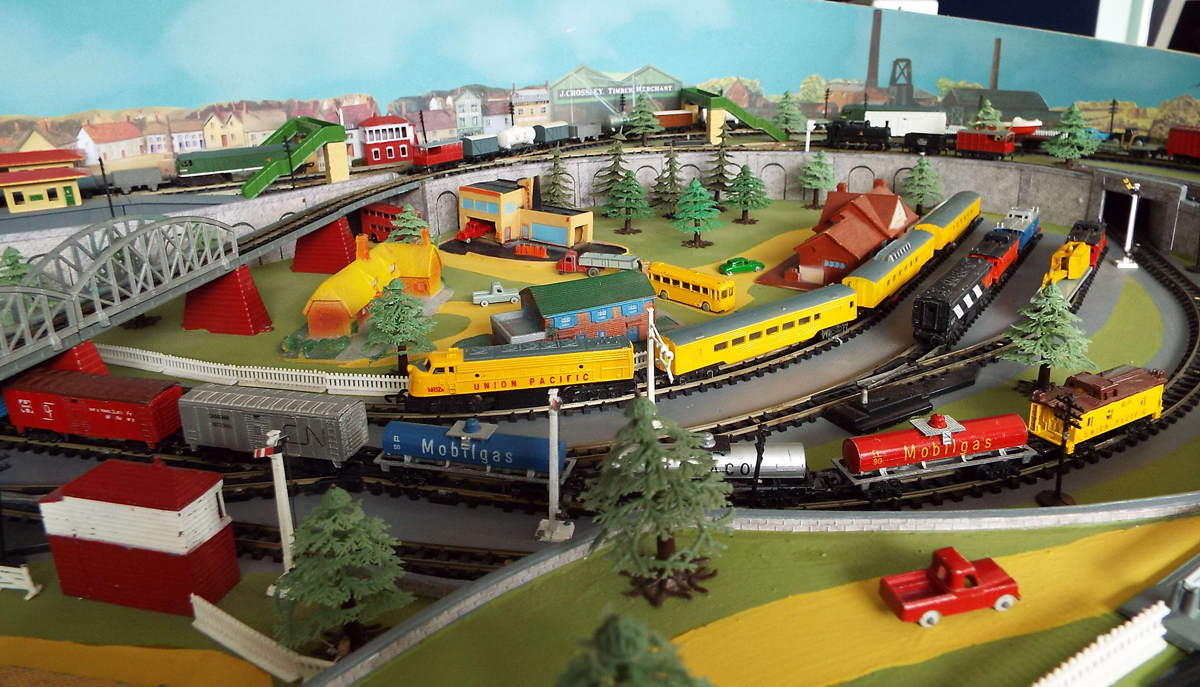
To represent the track bed, roads, and grass, I painted the baseboard with household latex paint in test pots and opted not to use flock powder to keep it in the style of the 1960s. Most of the colors were taken from the Lone Star preformed plastic layout (with yellow roads!). This scheme suits the Lone Star preformed “Gulliver” range of buildings, which were made in a soft vinyl plastic that has a simplistic charm, and which also found their way onto other early N gauge layouts in the late 1960s and early ’70s.
For the retaining walls and bridges, I used the modern Metcalfe gray stone wall with recesses drawn onto them prior to fitting to represent the style of the Merco brick papers available at the time. The backdrop is produced from the two-millimeter range of Builteezi sheets. While it’s true that only the four-millimeter range was available at the time, there was another set of two-millimeter sheets available at the time, now long since discontinued, though I cannot remember the name of the manufacturer. Lone Star vinyl plastic tunnels have also been incorporated into the layout, with a damaged tunnel cut up to suit the final locations. Lone Star tried to produce a complete railway system in the style of Tri-ang, Trix, and Hornby Dublo, and while this system was never fully developed, all the signals, signal boxes, buffer stops, road crossings, and viaducts are theirs. The one thing that is not produced by Lone Star is the loading gauge. Lone Star had designed a loading gauge, but it was never brought to fruition, so I made one up from a signal post with scratch-built arms.
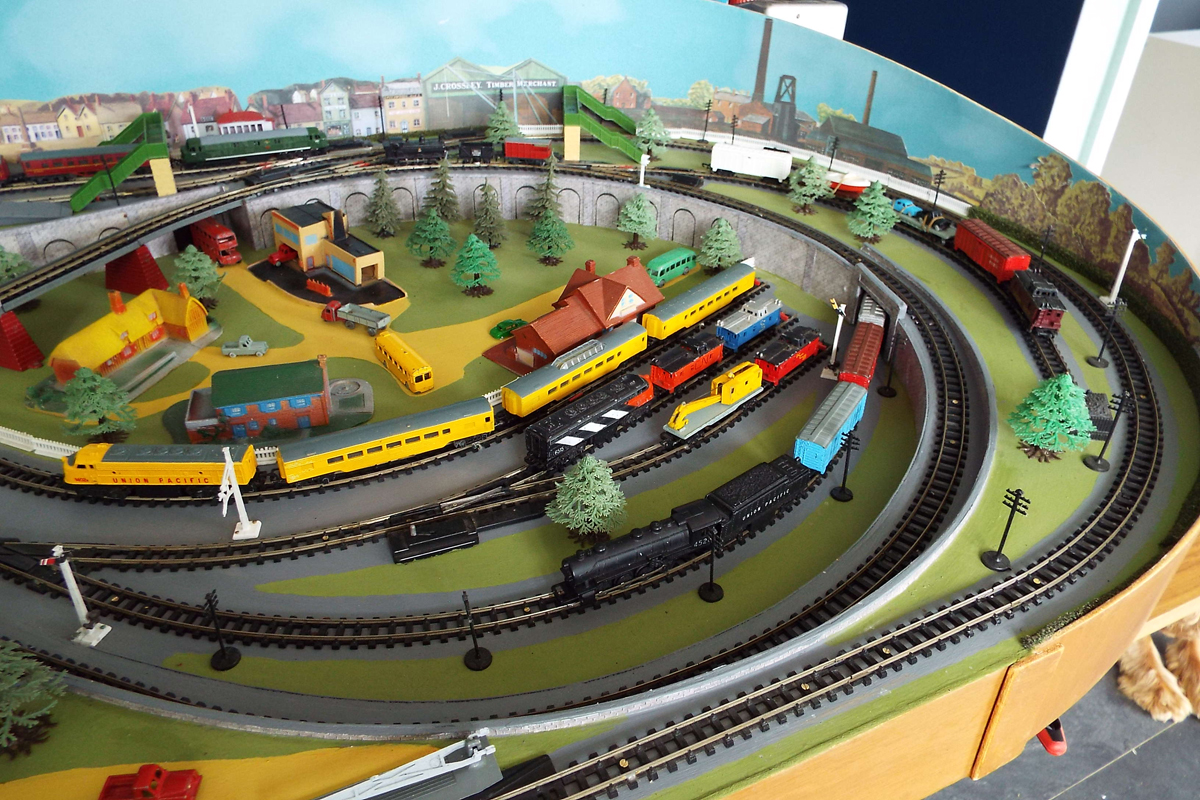
As for the rolling stock, again Lone Star produced both British and American models, much like Tri-ang. The Electro-Motive Division F7, as produced by Lone Star, appeared in quite a few liveries, though never the colorful Santa Fe “Warbonnet,” so I made my own using a repainted F7 and Microscale decals.
From 1962 onwards, Lone Star concentrated their efforts in the U.S. with distribution through Montgomery Ward. With the last Treble-O-lectric produced in 1965 for that market, back in the U.K., it was back to a push-along range which lasted a few more years. An attempt to relaunch a railway system was quashed in the late 1970s with a proposed lineup which included a model of the U.K.’s Intercity 125 train, among others, but these plans never reached fruition. By 1985, it was all over for Lone Star, and so ended the “First OOO Model Electric Railway,” as claimed by their sales slogan from 1960.
To complement the stock produced by Lone Star, I have produced a couple of items not made by them. This roster includes a Class 41 North British Warship locomotive, a proposed model with its own catalogue No. EL 110, which was later reused for the power clip. My model has a modified resin body riding on a modified Minitrix 47 chassis fitted with Lone Star couplings.
I have also produced a track cleaning wagon, a useful accessory based on the coal truck which uses cigarette filters, much like the rare Hornby Dublo track cleaning wagon.
Finally, I produced a model of the 1966 Romford Models ready-to-run N gauge Pannier tank, complete with Lone Star couplings! An image of this model was shown in the old Walkers & Holtzapffel catalogue, indicating that at least prototypes were created, but I do not know if these models ever actually made it to production. I have previously contacted the current owners of Romford Models regarding the Pannier, and they said that they had no knowledge of it. My re-creation of this model came from a modified BH Enterprises white-metal Pannier tank locomotive kit, which sits on an altered Graham Farish chassis, complete with the aforementioned Lone Star couplers.
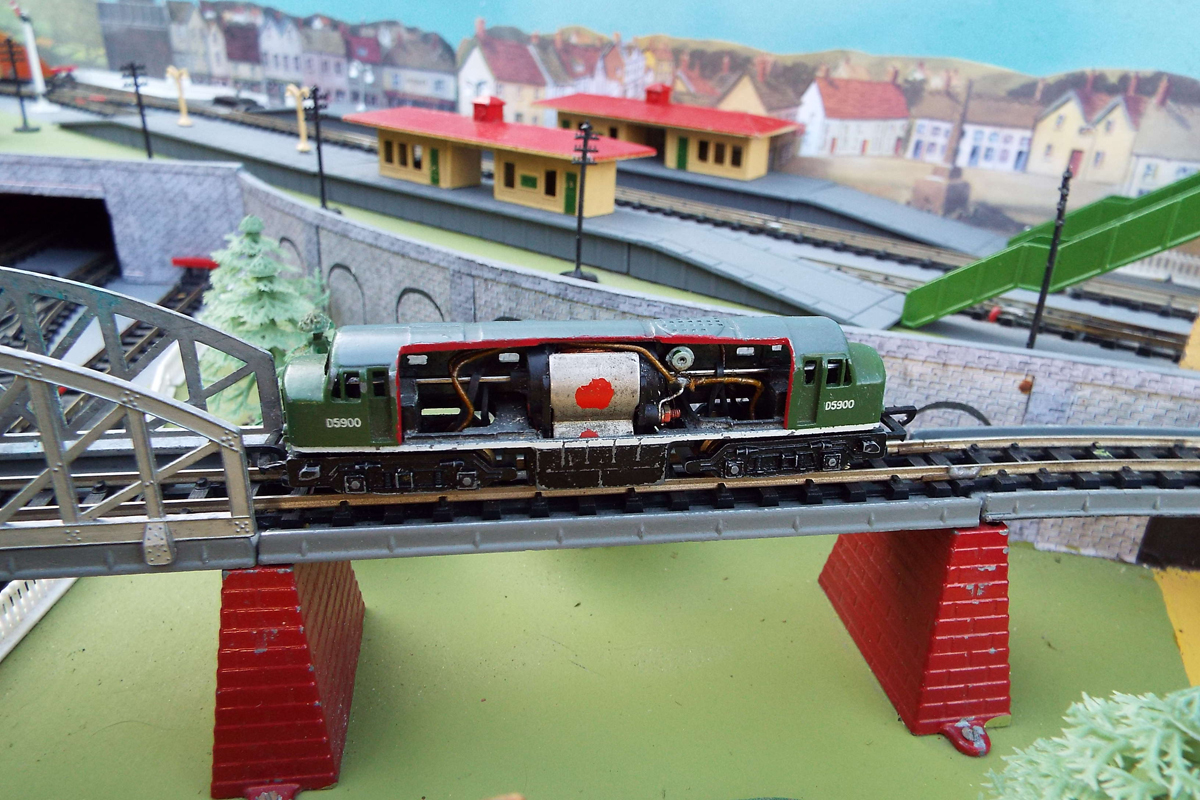
For extended exhibition use, I have also re-motored some locomotives with a five-pole can motor and extended shafts, which are held in place with heat shrink tubing. Lead sheets are used to fill the motor magnet space, giving a platform for the motor to sit upon, although some of the old motors are still strong and usable. The rubber bands are always an issue, and in the past I have used replacement Hornby Dublo traction tires, but now I make my own from neoprene tubes for the purpose. The trick is not to make them too wide.
For further information on Lone Star history and products, I recommend The Great Book of Lone Star by the late Geoffrey Ambridge, the son of one of the company’s founders. The Lone Star Model Train Reference Guide is a three-volume tome by Donald Troost, a collector from the Netherlands, which is a handy guide for the Lone Star collector.
Finally, I would be remiss if I did not mention Simon Culverhouse, who was a source of inspiration for my layout. He had a Lone Star display which also included a “digitally” controlled Lone Star push-along layout, where the operators just pushed their trains along the track, often with an ear-to-ear smile. I first saw this layout at the Bassetlaw North Nottinghamshire Railway Society show in Retford, England, and it showed that a push layout could entertain, inform, and bring back memories of Lone Star to the members of the public, some of whom could remember collecting Lone Star models when they were younger. This is, to me, what our wondrous hobby is all about. It’s like my old N gauge friend Andy Calvert used to say: “Enjoy your train set!”







